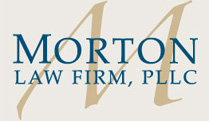Understanding the Significance of Trusts
This article addresses a topic that is
important to clients and all wealth planning professionals – trusts. When used properly, trusts can provide significant
advantages to clients and to the advisors who recommend them. Given the numerous types of trusts, this newsletter explores
the general advantages of trusts as well as some of the most common types of trusts.
Planning Tip:
According to a recent survey, 70% of financial advisors expect that more of their clients will establish trusts.
Revocable vs. Irrevocable Trusts
There are two basic types of trusts: revocable trusts and irrevocable trusts. Perhaps the most common type of trust is
revocable trusts (aka revocable living trusts, inter vivos trusts or living trusts). As their name implies, revocable
trusts are fully revocable at the request of the trust maker. Thus, assets transferred (or "funded") to a revocable trust
remain within the control of the trust maker; the trust maker (or trust makers if it is a joint revocable trust) can simply
revoke the trust and have the assets returned. Alternatively, irrevocable trusts, as their name implies, are not revocable
by the trust maker(s).
Revocable Living Trusts
As is discussed more below, revocable trusts do not provide asset protection for the trust maker(s). However, revocable
trusts can be advantageous to the extent the trust maker(s) transfer property to the trust during lifetime.
Planning Tip:
Revocable trusts can be excellent vehicles for disability planning, privacy, and probate avoidance. However, a
revocable trust controls only that property affirmatively transferred to the trust. Absent such transfer, the revocable
trust may not control disposition of the trust maker’s property.
Planning Tip:
Unlike with a trust, one cannot affirmatively transfer title of property during life using a will. Also, whether
estate planning is by will or trust, it is important to ensure that the client’s property passing pursuant to contract
(e.g., by beneficiary designation for retirement plans and life insurance) does not thwart the client’s planning objectives
set forth in the trust or will.
Asset Protection for the Trust Maker
The goal of asset protection planning is to insulate the client’s assets that would otherwise be subject to the claims of
his or her creditors. Typically, a creditor can reach any assets owned by a debtor. Conversely, a creditor cannot reach assets
not owned by the debtor. This is where trusts come into play.
Planning Tip:
The right types of trusts can insulate assets from creditors because the trust owns the assets, not the debtor.
As a general rule, if a trust maker creates an irrevocable trust and is
a beneficiary of the trust (i.e., it is
a so-called self-settled spendthrift trust), assets transferred to the
trust are not protected from the trust maker’s creditors. This general
rule applies whether or not the transfer was done to defraud a creditor
or creditors.
Until fairly recently, the only way to remain a beneficiary of a trust
and get protection against creditors for the trust assets was to
establish the trust outside the United States in a favorable
jurisdiction. This can be an expensive proposition.
However, the laws of a handful of states (including Alaska, Delaware,
Nevada, Rhode Island, South Dakota, and Utah) now permit self-settled
spendthrift trusts or what are commonly known as domestic asset
protection trusts. Under the laws of these few states, a trust maker
can transfer assets to an irrevocable trust and the trust maker can be
a trust beneficiary, yet trust assets can be protected from the trust
maker’s creditors to the extent distributions can only be made within
the discretion of an independent trustee. Note that this will not work
when the transfer was done to defraud or hinder a creditor or
creditors. In that case, the trust will not protect the assets from
those creditors.
Planning Tip:
A handful of states permit self-settled spendthrift trusts or what are commonly known as domestic asset protection trusts.
For those clients unwilling to give up a beneficial interest in their
assets to protect those assets from future creditors, trusts
established under the laws of a jurisdiction that permits self-settled
spendthrift trusts or a trust established under the laws of a foreign
country, may be appealing.
Asset Protection for Trust Beneficiaries
A revocable trust provides no asset protection for the trust maker during his or her life. Upon the death of the trust maker,
however, or upon the death of the first spouse to die if it is a joint trust, the trust becomes irrevocable as to the deceased
trust maker’s property and can provide asset protection for the beneficiaries, with two important caveats.
First, the assets must remain in the trust to provide ongoing asset
protection. In other words, once the trustee distributes the assets to
a beneficiary, those assets are no longer protected and can be attached
by that beneficiary’s creditors. If the beneficiary is married, the
distributed assets may also be subject to the spouse’s creditor(s), or
they may be available to the former spouse upon divorce.
Planning Tip:
Consider trusts for the lifetime of the beneficiaries to provide prolonged asset protection for the trust assets.
Lifetime trusts also permit the client’s financial advisor to continue to invest the trust assets as the client desired, which
also helps ensure that trust returns are sufficient to meet the client’s planning objectives.
The second caveat follows logically from the first: the more rights the
beneficiary has with respect to trust distributions, the less asset
protection the trust provides. Generally, a creditor "steps into the
shoes" of the debtor and can exercise any rights of the debtor. Thus,
if a beneficiary has the right to compel a distribution from a trust,
so too can a creditor compel a distribution from that trust.
Planning Tip:
The more rights a beneficiary has to compel distributions from a trust, the less protection that trust provides for that
beneficiary.
Therefore, where asset protection is a significant concern for the
client, it is important that the trust maker not give the beneficiary
the right to automatic distributions (for example, 5% or $5,000
annually). A creditor will simply salivate in anticipation of each
distribution. Instead, the client should consider discretionary
distributions by an independent trustee.
Planning Tip:
Consider a professional fiduciary to make distributions from
an asset protection trust. Trusts that give beneficiaries no
distribution rights, but rather give complete discretion to an
independent trustee, provide the highest degree of asset protection.
Lastly, with divorce rates at or exceeding 50% nationally, the
likelihood of a client’s child becoming divorced is quite high. By
keeping assets in trust, the trust maker can ensure that the trust
assets do not go to a former son-in-law or daughter-in-law, or their
bloodline.
Irrevocable Life Insurance Trusts
With the exception of the self-settled spendthrift trusts discussed
above, a transfer to an irrevocable trust can protect the assets from
creditors only if the trust maker is not a beneficiary of the trust.
One of the most common types of irrevocable trust is the irrevocable
life insurance trust, also known as a Wealth Replacement Trust.
Under the laws of many states, creditors can access the cash value of
life insurance. But even if state law protects the cash value from
creditors, at death, the death proceeds of life insurance owned by your
clients are includible in their gross estate for estate tax purposes.
Clients can avoid both of these adverse results by having an
irrevocable life insurance trust own the insurance policy and also be
its beneficiary. The dispositive provisions of this trust typically
mirror the provisions of the client’s revocable living trust or will.
And while this trust is irrevocable, as with any irrevocable trust, the
trust terms can grant an independent trust protector significant
flexibility to modify the terms of the trust to account for
unanticipated future developments.
Planning Tip:
In addition to providing asset protection for the insurance or other assets held in trust, irrevocable life insurance trusts
can eliminate estate tax and protect beneficiaries in the event of divorce.
If the trust maker is concerned about accessing the cash value of the
insurance during lifetime, the trust can give the trustee the power to
make loans to the trust maker during lifetime or the power to make
distributions to the trust maker’s spouse during the spouse’s lifetime.
Even with these provisions, the life insurance proceeds will not be
included in the trust maker’s estate for estate tax purposes.
Planning Tip:
With a properly drafted trust, the trust maker can access cash value through policy loans.
Irrevocable life insurance trusts can be individual trusts (which
typically own an individual policy on the trust maker’s life) or they
can be joint trusts created by a husband and wife (which typically own
a survivorship policy on both lives).
Planning Tip:
Since federal estate tax is typically not due until the death
of the second spouse to die, clients often use a joint trust owning a
survivorship policy for estate tax liquidity purposes. However, a joint
trust limits the trust makers’ access to the cash value during
lifetime. In these circumstances, consider an individual trust with the
non-maker spouse as beneficiary.
Conclusion
Clients can protect their assets from creditors by placing them in
a well-drafted trust, and they can protect their beneficiaries from
claims or creditors and predators by keeping those assets in trust over
the beneficiary’s lifetime. By working together, the wealth planning
team can ensure that the plan meets each client’s unique planning
objectives.









Sorry, comments for this entry are closed at this time.